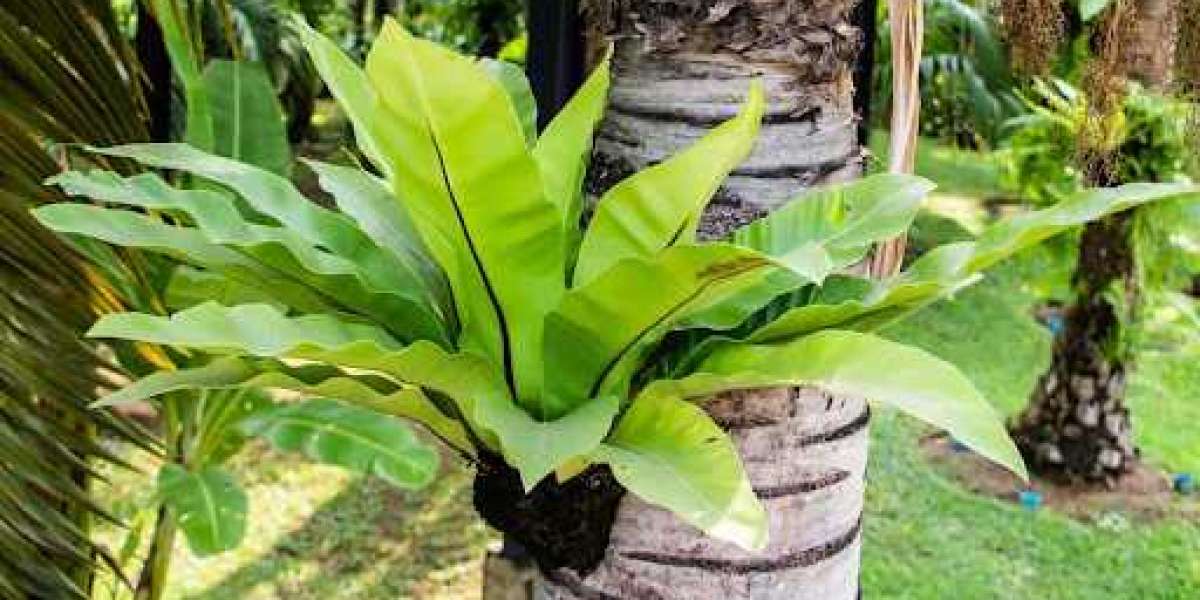In the lush realm of indoor gardening, the Bird's Nest Fern stands as an elegant emblem of nature's beauty. With its graceful fronds and distinctive nest-like shape, this fern has captivated the hearts of plant enthusiasts. You've come to the right place if you're a greenery lover looking to delve into nurturing Bird's Nest Ferns. This comprehensive guide will unravel the secrets to successful Bird's Nest Fern care, ensuring these non-carnivorous plants thrive in your home sanctuary.
Understanding the Bird's Nest Fern
Unlike its distant cousins, the carnivorous plants that capture insects for sustenance, the Bird's Nest Fern (Asplenium nidus) is not carnivorous. Instead, it relies on the traditional methods of photosynthesis to thrive. Its distinctive name is derived from the shape of its rosette of fronds, which resemble a bird's nest. Native to tropical regions, these ferns thrive in the humid and shaded environments of rainforests.
Key Care Factors for Bird's Nest Ferns
Light: Bird's Nest Ferns thrive in medium to low light conditions. Avoid direct sunlight, as it can scorch their delicate fronds. Placing them near east or north-facing windows or a few feet away from a south or west-facing window is ideal.
Temperature and Humidity: These ferns adore humidity. Aim for a relative humidity level of around 50% or higher. If your home is dry, consider using a humidity tray or a room humidifier to create a suitable environment. Keep the temperature between 65°F to 80°F (18°C to 27°C).
Watering: Consistent moisture is essential. Water your Bird's Nest Fern when the top inch of the soil feels dry. Ensure proper drainage, as they dislike standing water. Watering from below by placing the pot in a water tray can be helpful.
Soil: Use a well-draining potting mix rich in organic matter. A mix containing peat moss, perlite, and pine bark works well for these ferns.
Potting and Repotting: Repot your Bird's Nest Fern when it becomes root-bound, typically every 2 to 3 years. Choose a slightly larger pot and refresh the soil to provide ample space for growth.
Maintenance Tips
Fertilization
During the active growing season, which typically spans spring and summer, your Bird's Nest Fern will benefit from periodic fertilization. Choose a balanced liquid fertilizer and dilute it to half the recommended strength. A diluted fertilizer every 4 to 6 weeks will give the fern the necessary nutrients to promote healthy growth. Avoid over-fertilizing, as this can lead to an accumulation of salts in the soil, which can harm the plant.
Pruning
Regular pruning is essential to maintain the visual appeal of your Bird's Nest Fern and encourage new growth. Carefully trim them off at the base as the fronds age and turn yellow or brown. Use clean and sharp pruning shears to make clean cuts, preventing damage to healthy foliage. Pruning improves the fern's aesthetics and redirects the plant's energy towards producing new fronds.
Pest Control
While Bird's Nest Ferns are generally hardy and pest-resistant, occasional pest issues can arise. Mealybugs and scale insects might infest the fronds, affecting their health. Regularly inspect your fern for signs of pests, such as sticky residues or small crawling insects. If you notice an infestation, promptly address it with natural solutions like insecticidal soap or neem oil. These options are gentle on the plant while effectively controlling pests.
Conclusion
The Bird's Nest Fern is a living testament to the diversity of plant life, showcasing its captivating beauty without the need for carnivorous tendencies. By understanding the nuances of its care, you can successfully nurture these delicate fronds, bringing a slice of tropical paradise into your home. If you want this plant online, The Jungle Collective is the best nursery because we have plot accessories and their foods also.







